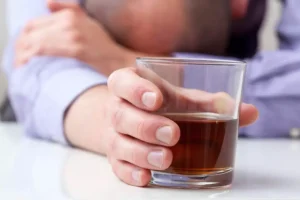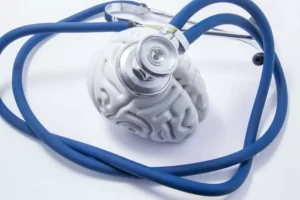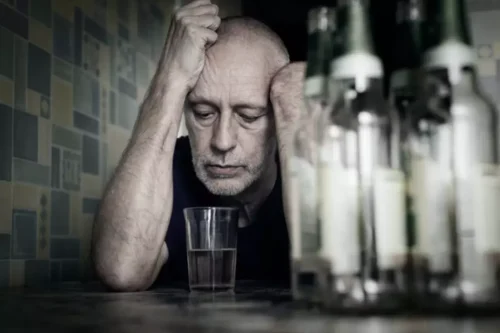
A few said that their physicians ‘abandoned’ them as theystruggled to discontinue benzodiazepines. If your doctor has prescribed benzos, take them as per the instructions on the prescription. Contact your doctor for advice if you have been taking benzos for longer than 2–4 weeks.
Earlier Studies
As cannabis withdrawal is usually mild, no withdrawal scales are required for its management. Patients withdrawing from inhalants should be observed every three-four hours to assess for complications such as hallucinations, which may require medication. A minority of patients withdrawing from stimulants may become significantly distressed or agitated, presenting a danger to themselves or others.
Management of severe alcohol withdrawal (AWS score 15+)

Given concerns for use dependence and withdrawal, SSRIs and antidepressants have been made mainstay therapy for these conditions. However, given their delayed onset of action, BZDs continue to be widely prescribed for these illnesses [12]. Respondents to the survey were also self-selected, meaning their data may not align perfectly with a larger population of all people taking benzodiazepines. Nevertheless, the survey findings support and bolster earlier research on the condition dating from the 1960s and repeated as factors of concern in the 1970s and 1980s. There are no standard tapering regimens and the rate of tapering depends on the starting dose, duration of therapy, risk of relapse and how well tapering is tolerated by the patient.
Holistic and Lifestyle Approaches
Withdrawal symptoms may begin after as little as 3–6 weeks of use, even when a person uses the drugs as the doctor directed. During the acute withdrawal phase, doctors may monitor the person and recommend other drugs to control problematic symptoms. Acute withdrawal begins after the initial withdrawal symptoms, generally within a few days.
- A healthcare professional should supervise benzo withdrawal to help monitor and manage the symptoms.
- Oxcarbazepine has a better side effect profile and is a more tolerable anticonvulsant than older antiepileptic drugs [71].
- The subjects were interviewed with surgery-based consultations for approximately 10 min [12].
- For example, doctors may recommend flumazenil (Romazicon) to help with severe withdrawal symptoms and other drugs, such as buspirone (BuSpar), to help people with severe anxiety symptoms.
As withdrawal progresses, patients often find their physical and mental health improves with improved mood and improved cognition. Current treatment for withdrawal is through tapering with clonazepam, and overdose should be treated with flumazenil [67]. There is room in the research body for further exploration into alternative methods of treating withdrawal that does not include the BZD itself. This call to action proves especially relevant, as those seeking treatment for BZD dependence and withdrawal are on the rise in the United States [3]. While a therapeutic dose has not been proven teratogenic, use during pregnancy has been linked to low birth weight, preterm labor, and intrauterine growth restriction. The unborn fetus is at high risk for “floppy infant syndrome,” characterized by muscle laxity, failure to suckle, and oversedation.

Your doctor can inform you about how gradually you should come off benzos. According to the Government of Western Australia Department of Health, benzo withdrawal symptoms can last for weeks or months. Inhalant withdrawal symptoms can begin anywhere between a few hours to a few days after ceasing inhalant use. Patients should drink 2-4 litres of water per day during withdrawal to replace fluids lost through perspiration and diarrhoea.

1. Factors Influencing Withdrawal Symptoms
Many respondents had taken more than one type of benzodiazepine, whether concurrentlyor sequentially. The most frequently taken benzodiazepines were clonazepam (52.9%),alprazolam (41.7%), lorazepam (36.1%), and diazepam (32.1%). Patients wereprescribed benzodiazepines for a wide range of conditions (see Table 1). The aim of this study is to assess the experiences of those taking, tapering,or having discontinued benzodiazepines. The management of dependence involves either gradual benzodiazepine withdrawal or maintenance treatment.
Life effects

The greater the amount of opioid used by the patient the greater the dose of codeine phosphate required to control withdrawal symptoms. Symptoms that are not satisfactorily reduced by codeine phosphate can be managed with symptomatic treatment as required (see severe benzodiazepine withdrawal syndrome Table 3). Withdrawal symptoms vary according to the drug of dependence and severity of dependence, but often include nausea, vomiting, diarrhoea, anxiety and insomnia. Table 3 provides guidance on medications for alleviating common withdrawal symptoms.
( I haven’t even started to taper off my benzo, but I already have symptoms. What’s going on?
- These drugs are habit-forming and can easily result in physical dependence.
- The Alcohol Withdrawal Scale (AWS, p.49) should be administered every four hours for at least three days, or longer if withdrawal symptoms persist.
- The patient may be scared of being in the closed setting, or may not understand why they are in the closed setting.
- After withdrawal is completed, the patient should be engaged in psychosocial interventions such as described in Section 5.
- A link to the survey was also offered on some Facebook pages and Reddit threadsrelated to general health and mental health.
- If beta blockers have been used regularly, they too must be tapered off.
Even if the patient’s equivalent diazepam dose exceeds 40mg, do not give greater than 40mg diazepam daily during this stabilisation phase. Patients in benzodiazepine withdrawal should be monitored regularly for symptoms and complications. Patients should be monitored regularly (3-4 times daily) for symptoms and complications. The Short Opioid Withdrawal Scale (SOWS, p.37) is a useful tool for monitoring withdrawal. During withdrawal some patients may become disruptive and difficult to manage. The patient may be scared of being in the closed setting, or may not understand why they are in the closed setting.